Navi Mumbai, often overshadowed by its more famous neighbor Mumbai, is now coming into its own as a prime real estate destination. Improved connectivity, expanding infrastructure, and a strategic location are driving significant growth in its residential market. All signs currently favour the residential market in 2024, and the year can well create another peak in housing sales and new launches. As a result, several micro markets in Navi Mumbai are emerging as hotspots for both investors and homebuyers.
The Steady Rise
Navi Mumbai's real estate market is poised for substantial growth, driven by large-scale infrastructure projects. The Knight Frank India report predicts a 20% increase in housing demand by 2025. This growth is particularly notable in micro markets such as Vashi, Nerul, Belapur, Kharghar, Airoli, Panvel, Ulwe, and Sanpada.
Housing prices in the Mumbai Metropolitan Region (MMR) have seen a 4% annual rise, with Navi Mumbai's sub-markets experiencing even more significant increases. For instance, Belapur, Airoli, Kharghar, Nerul, Seawoods, and Vashi saw a 22% rise in housing prices in Q4 2023. The Mumbai Trans Harbour Link (MTHL) is a critical infrastructure project contributing to this surge, enhancing connectivity and driving up property values in these areas.
Key Micro Markets in Focus
Vashi- Vashi, one of the oldest and most developed nodes in Navi Mumbai, remains a sought-after residential and commercial hub. Its well-planned infrastructure, excellent connectivity to Mumbai, and robust social amenities make it an attractive destination for homebuyers and investors alike. Vashi's thriving commercial sector, coupled with its proximity to major employment hubs, continues to drive demand for residential properties.
Nerul- Nerul, known for its upscale residential complexes and educational institutions, has seen a surge in housing demand. The presence of major employment hubs and improved transportation links have further boosted its appeal. Additionally, Nerul's scenic beauty, with parks and water bodies, adds to its attractiveness as a residential area.
Belapur- Belapur, Navi Mumbai's central business district (CBD), is witnessing rapid growth. With several government offices and corporate headquarters, Belapur attracts professionals seeking proximity to their workplaces. The planned extension of metro services will enhance its connectivity, making it an even more attractive residential option. Belapur's development is also characterized by high-end residential projects that cater to the affluent segment of homebuyers.
Kharghar- Kharghar, a planned suburb developed by the City and Industrial Development Corporation (CIDCO), boasts scenic landscapes, excellent connectivity, and a host of amenities, including a golf course and Central Park. Its transformation into a bustling residential and commercial hub is supported by its connectivity to Mumbai, Navi Mumbai, and Pune. Kharghar's real estate market offers a mix of high-end and affordable housing options, catering to a diverse demographic.
Airoli- Airoli, strategically located near Thane and Mumbai, has evolved into a prominent residential and IT hub. Its proximity to major business districts and excellent infrastructure make it a preferred choice for professionals working in the IT sector. The presence of IT parks and multinational companies in Airoli has spurred demand for residential properties, driving up prices and rental yields.
Panvel- Panvel is emerging as a key residential market due to its strategic location near major highways and the upcoming Navi Mumbai International Airport. It offers relatively affordable housing options compared to other nodes, attracting a diverse demographic of homebuyers. Panvel's development is further supported by its proximity to industrial areas, making it a preferred location for employees working in these sectors.
Ulwe- Ulwe is experiencing rapid development, driven by its proximity to the upcoming airport and the Navi Mumbai Special Economic Zone (NMSEZ). Its well-planned infrastructure and relatively lower property prices make it a hotspot for investment. Ulwe's growth is characterized by the development of new residential projects and the establishment of essential amenities to cater to its growing population.
Sanpada- Sanpada, known for its high-quality residential projects, offers excellent connectivity to both Navi Mumbai and Mumbai. Its strategic location and robust infrastructure continue to attract homebuyers looking for a balanced urban lifestyle. Sanpada's real estate market is marked by steady price appreciation and a growing number of residential developments.
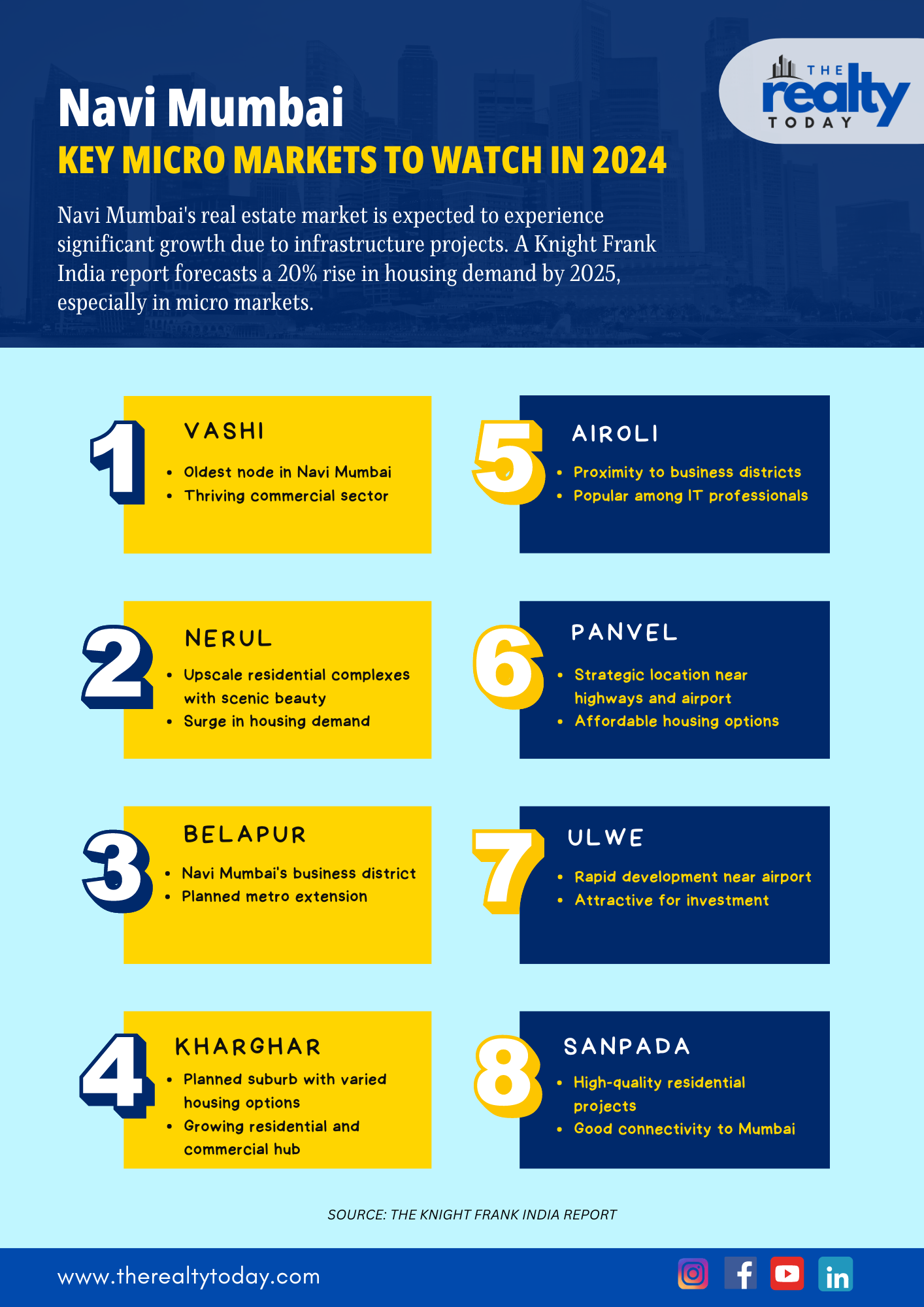
The Micro-Market Effect
The micro-market effect in Navi Mumbai is a phenomenon wherein the growth and development of key residential markets in the region have a ripple effect on surrounding peripheral areas. As major nodes such as Vashi, Nerul, Belapur, Kharghar, Airoli, Panvel, Ulwe, and Sanpada experience substantial growth and infrastructure improvements, adjacent areas also witness increased demand and development activity.
Improved connectivity and infrastructure upgrades play a pivotal role in driving this micro-market effect. As transportation networks expand and connectivity to major employment hubs improves, previously overlooked peripheral areas become more accessible and attractive to developers and homebuyers. For example, the Mumbai Trans Harbour Link (MTHL) not only enhances connectivity to Navi Mumbai but also facilitates easier access to surrounding areas, stimulating growth in these regions.
Additionally, the concentration of employment opportunities in key CBDs and industrial estates within Navi Mumbai creates a demand for residential properties in nearby areas. Professionals working in CBD Belapur, Taloja Industrial Estate, Vashi, Ghansoli, and Airoli seek convenient housing options within a reasonable commuting distance, leading to increased demand for residential properties in adjacent micro-markets.
Furthermore, the spillover effect of development initiatives and infrastructure projects contributes to the growth of peripheral areas. As amenities and services improve in key residential markets, neighboring areas also benefit from enhanced infrastructure, public amenities, and housing quality. This overall improvement in livability and accessibility further fuels demand for residential properties in these emerging micro-markets.
Navigating Navi Mumbai's Residential Real Estate Landscape: Q1 2024 Insights
The residential market in Navi Mumbai experienced significant dynamics in Q1 2024, characterized by persistent demand juxtaposed with limited supply, leading to an increase in quarter-over-quarter (QoQ) sales prices. According to data from Magicbricks Research, the ready-to-move (RM) segment recorded a QoQ price growth of 6.7%, reflecting the upward trajectory of residential property prices in the city.
The upcoming connectivity projects such as the Navi Mumbai International Airport, Mumbai Trans Harbour Link, and Navi Mumbai Metro Line 1, which are poised to elevate property prices steadily in the region. Particularly, the Mumbai Trans Harbour Link (MTHL) has emerged as a game-changer, significantly reducing commuting time between Mumbai and Navi Mumbai to just 20 minutes, thereby revolutionizing the real estate market in both cities.
Supply dynamics also played a crucial role, with both the RM and under-construction (UC) segments witnessing a QoQ increase in supply. The RM segment saw a 2.4% increase, while the UC segment recorded a more significant increase of 7.4%, reflecting ongoing construction activities and the influx of new properties into the market.
The demand for residential properties in Navi Mumbai surged by 14.6% QoQ. However, this demand surge was met with a slight reduction of 0.6% QoQ in residential listings, leading to a modest 3.9% QoQ increase in property prices.
New Development Plan for Navi Mumbai
The Navi Mumbai Municipal Corporation (NMMC) recently released its latest development plan (DP) for the next 20 years. This comprehensive plan aims to address current challenges and prepare for future growth, focusing on key areas such as transport infrastructure, residential quality, and living standards.
Key Aspects of the Development Plan
- Transport Infrastructure: Enhancements to road networks, public transportation, and connectivity to improve intra-city travel. The completion of major projects like the Mumbai Trans Harbour Link (MTHL) and the Navi Mumbai International Airport will further boost the region's connectivity and economic prospects.
- Residential Clusters: Upgrading the quality of residential areas with better amenities and services. This includes the development of affordable housing projects to cater to the needs of diverse income groups.
- Public Amenities: Development of sports facilities, schools, and improved public services. The plan emphasizes creating community spaces, parks, and recreational areas to enhance the quality of life for residents.
- Zoning Regulations: Changes to zoning laws to facilitate development and ensure adequate land is reserved for public use. This includes designating areas for commercial, residential, and mixed-use developments to create a balanced urban environment.
Specific Areas Highlighted for Development
The DP identifies several areas for targeted development, including playgrounds for children and reserved spaces for animal cremation in Nerul. Additionally, previously excluded lands in Airoli Dighe, Ilthanpada, Borivali, Adaiwali, and Bhutavali villages have been included in the DP for micro-planning, ensuring comprehensive development across Navi Mumbai. These areas will see improvements in infrastructure, public amenities, and housing quality, making them more attractive to residents and investors.
Conclusion
Navi Mumbai's residential market is on an upward trajectory, driven by improved infrastructure, strategic location, and robust demand. Key micro-markets such as Vashi, Nerul, Belapur, Kharghar, Airoli, Panvel, Ulwe, and Sanpada are emerging as prime destinations for homebuyers and investors. The region's growth is further supported by large-scale infrastructure projects and a favorable development plan by NMMC.
As developers and policymakers work together to enhance the city's infrastructure and housing quality, Navi Mumbai is set to become a thriving residential and commercial hub. With its blend of affordability, amenities, and connectivity, Navi Mumbai offers promising opportunities for those looking to invest in the real estate market.
Image source- jasonrealtyspeaks

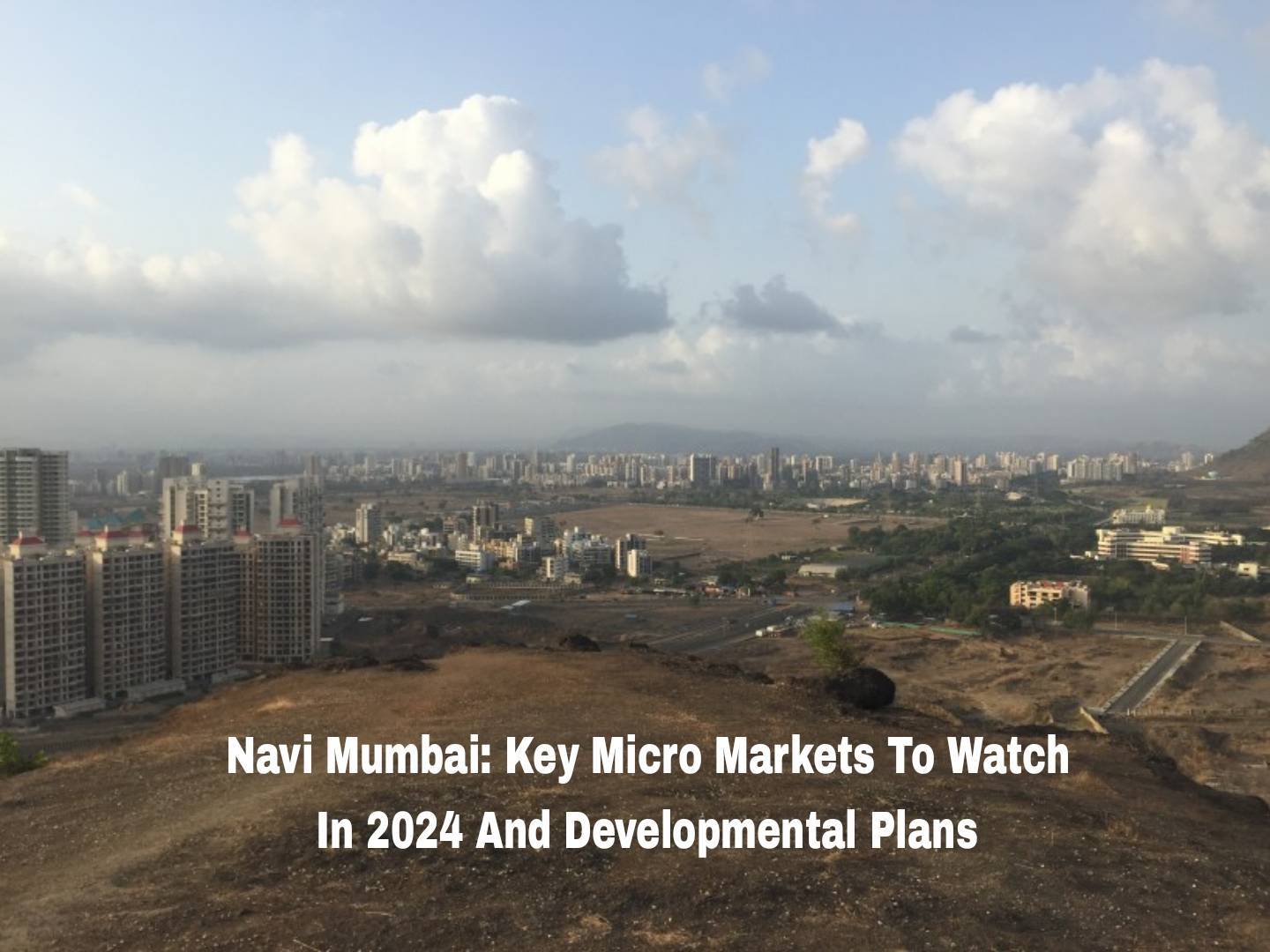
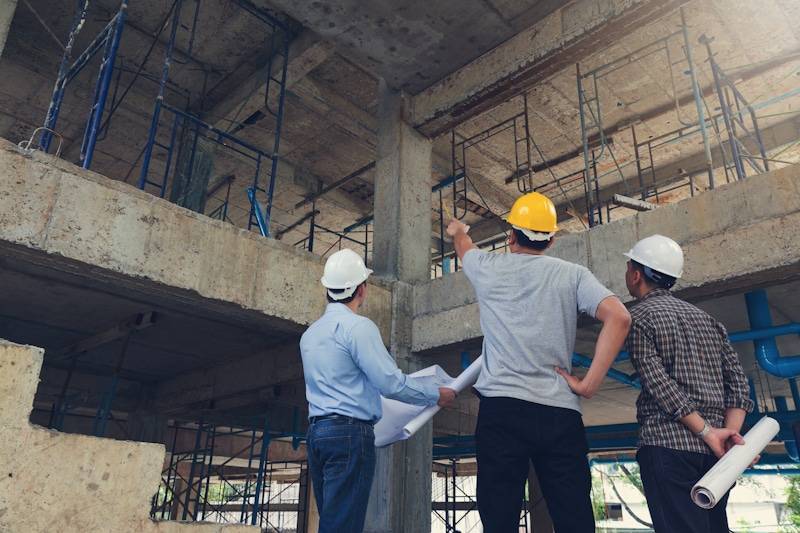
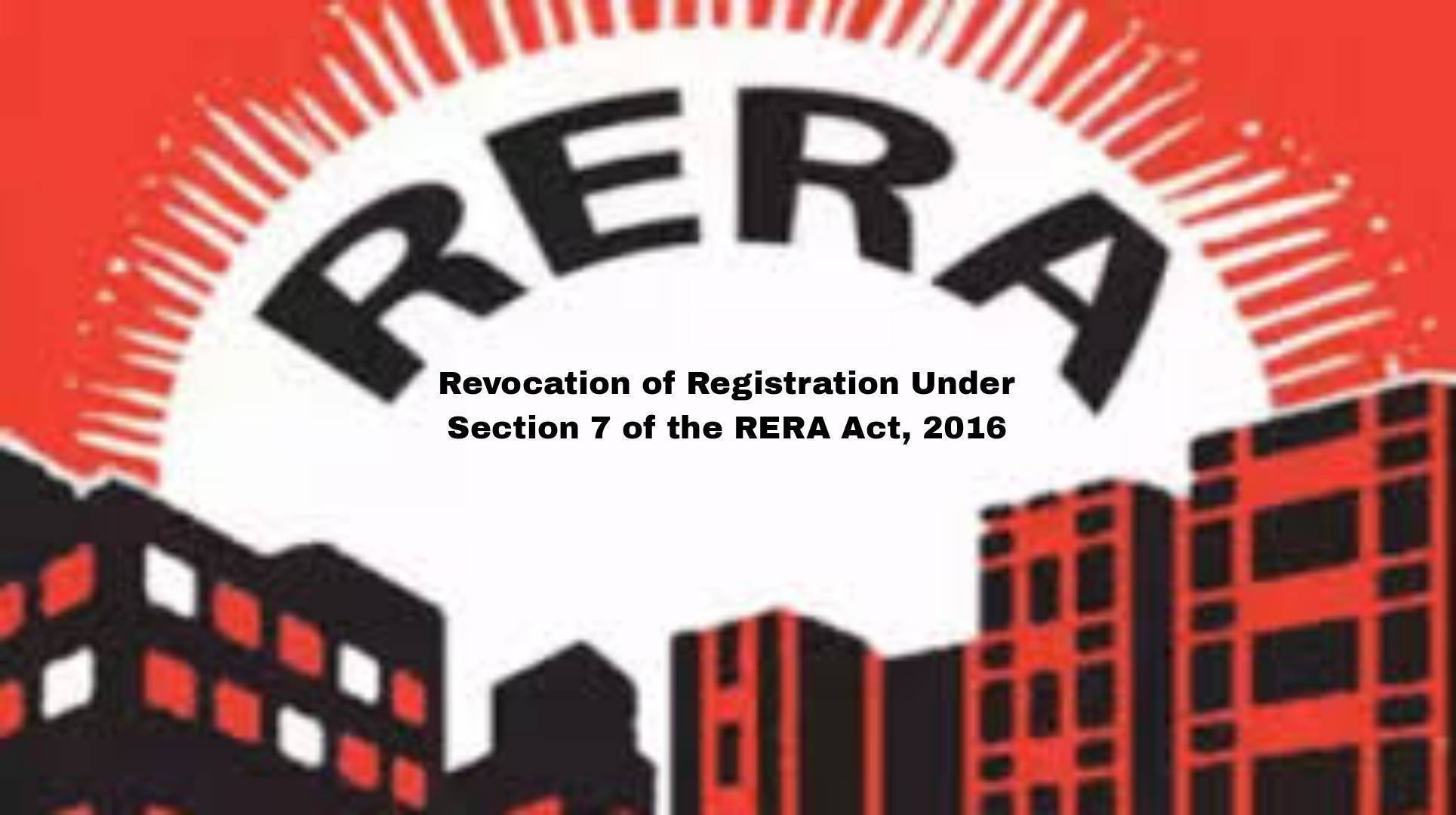


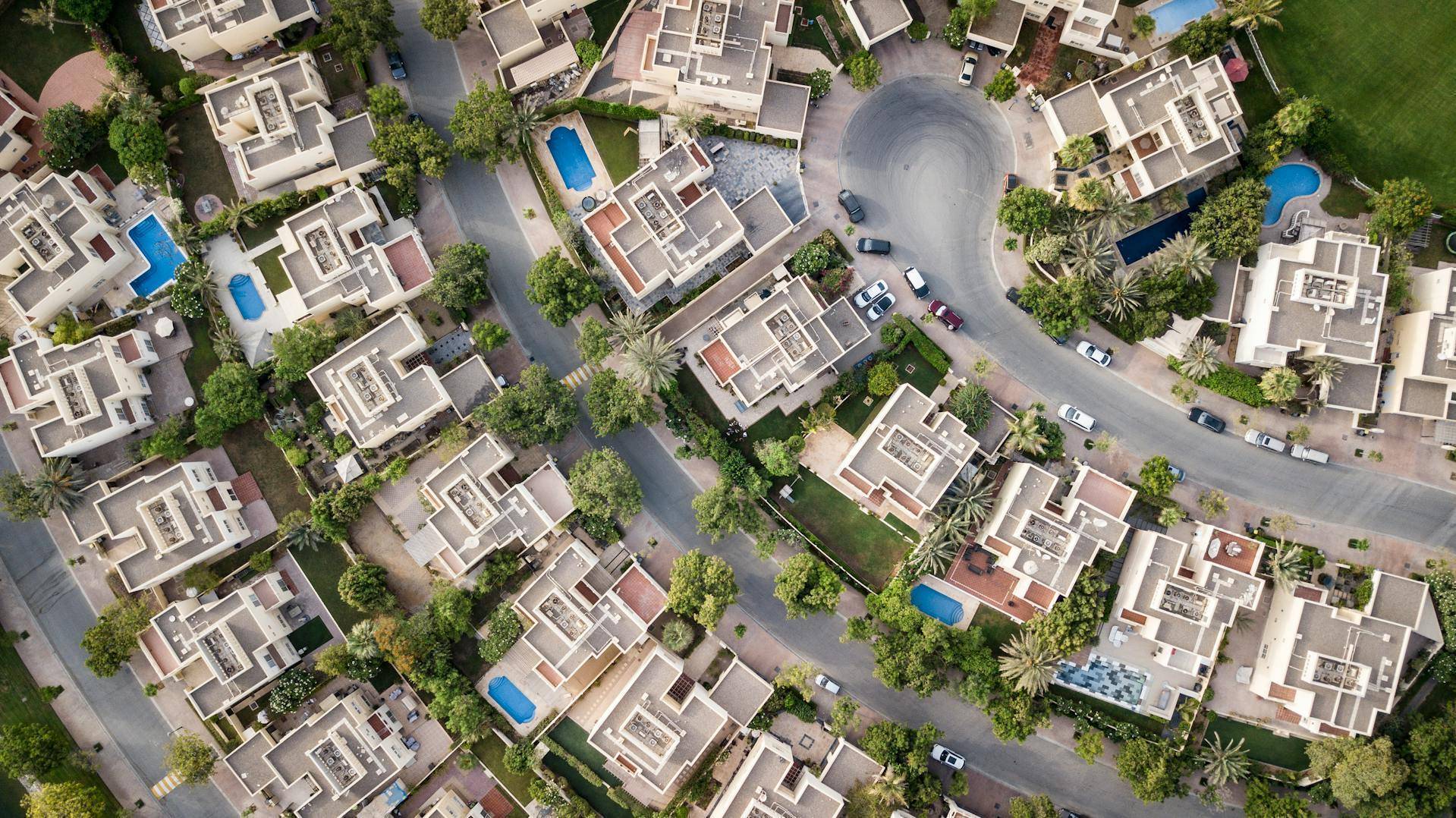
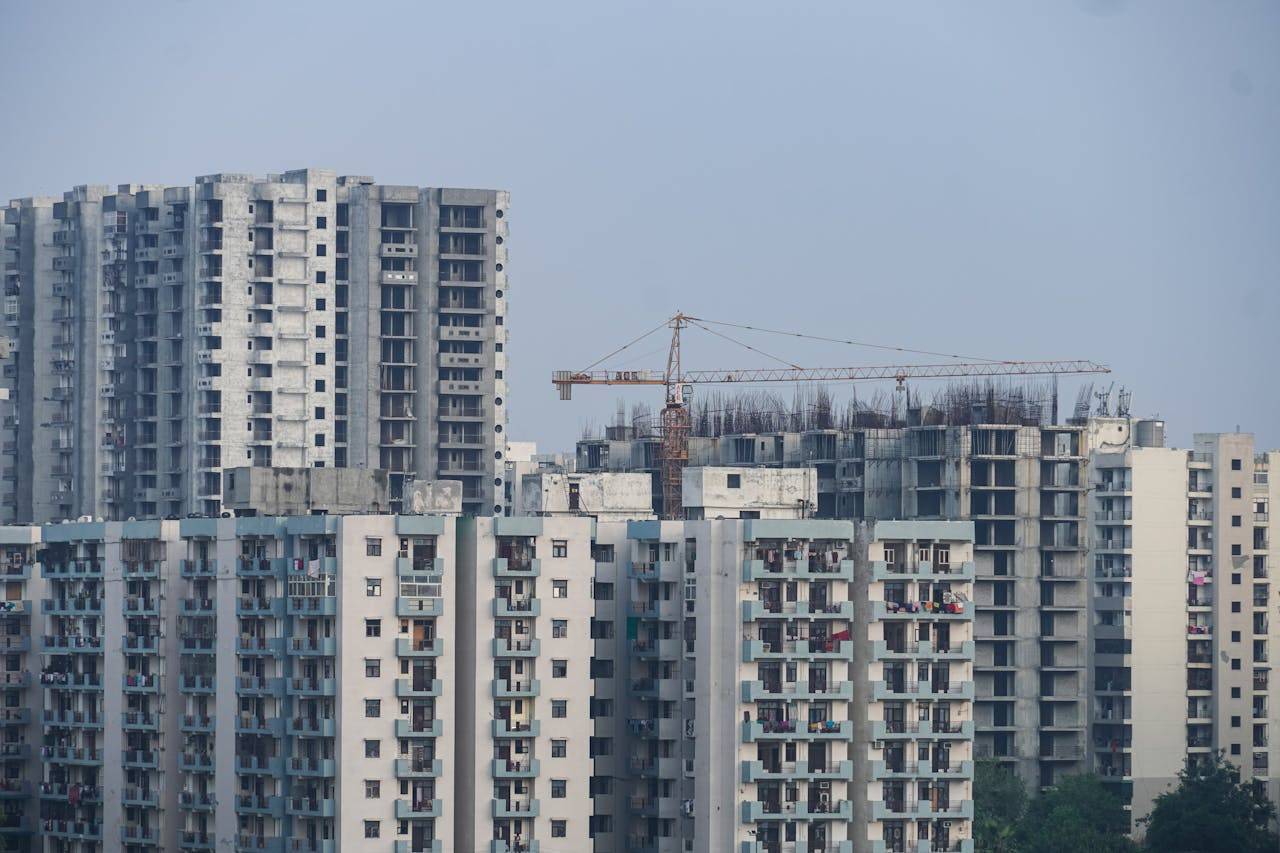

.png)